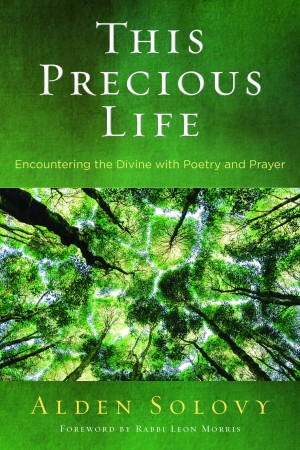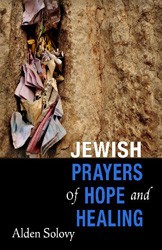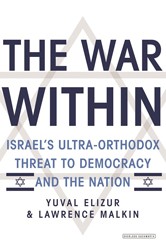Alden Solovy is the author of Jewish Prayers of Hope and Healing , a book of original liturgy in Hebrew and English. In April 2015 he was brutally attacked defending women reading Torah at the Western Wall in Jerusalem, and graciously agreed to share his thoughts on recent developments at the Kotel here on The ProsenPeople blog.
A tight shot of colorful notes stuck into a crack in the Western Wall illustrates the cover of my first book, Jewish Prayers of Hope and Healing. What other Jewish image could capture the yearnings of a people?
Yet I was warned against it. Several previewers— including a rabbi — said that the Kotel no longer represents the heart of Jewish hopes and dreams. As a de facto ultra-Orthodox synagogue, praying at the Kotel is meaningful to some and exclusive of others.
The same debate has come up in the wake of the Mandelblit Plan, the recent political deal expanding the egalitarian prayer plaza at Robinson’s Arch. Simply put, the question is this: Is the Kotel holy?
Of course it is. No question. It’s a pilgrimage site for Jews from around the world. It’s become the iconic Jewish metaphor for seeking nearness to God.
At the same time, of course it’s not. Silly thought. It’s just a retaining wall, the relic of an old thoroughfare, a spot meaningless in its day.
Even after being viciously stomped upon in the stomach when I helped pass a Sefer Torah to women’s prayer at the Kotel — even after harassment and hostility month after month — to me it’s still a place where a special kind of holiness resides, a holiness that cannot be taken away by misogyny or violence.
As the Mandelblit plan is touted by supporters, listen carefully to the “holy” versus “not holy” rhetoric. The language of “holiness” is being used as a political tool to distract the discussion from the deal’s content.
When leaders and supporters of Anat Hoffman’s Women of the Wall say, “It’s the same wall,” this is to elevate the status of Robinson’s Arch to that of the Kotel. It attempts to blur the distinction between the locations. The goal is to claim a victory at the Kotel itself. When other supporters say that the “stones are not holy,” the intent is to trivialize the goals of the Original Women of the Wall.
O‑WOW is led by women who founded WOW. They’ve organized to continue the 27-year struggle for women’s religious expression at the Kotel itself, not Robinson’s Arch. The “stones are not holy” argument is aimed at minimizing the importance of the specific location.
Both claims run in the undercurrent of the proponent’s rhetoric. Using both is verbal sleight of hand and a disingenuous combination.
One question is lost in the rhetoric of holiness. Does the Kotel matter to the Jewish people? Does the space once vehemently rejected by the WOW — Robinson’s Arch — have the same emotional, cultural and spiritual gravitas as the Kotel itself?
The Kotel matters because it’s ours, the icon of our yearnings. All of us. The entire Jewish people.
Robinson’s Arch is a beautiful place, but it’s simply not the Kotel. It never has been. And here’s where the language of the proponents gets even more interesting:
Supporters have portrayed the deal as a modern-day Hanukkah, the holiday commemorating the rededication of the Jewish Temple, proclaiming that Robinson’s Arch will, in time, attain the same level of holiness and stature in Jewish ethos as the Kotel itself. In this third contradictory message, Robinson’s Arch is neither Kotel nor not-Kotel; it’s an unrealized, potential Kotel waiting to be claimed.
Together, here are the three messages:
 Robinson’s Arch is Kotel-in-waiting, ready to be sanctified by the expanded prayer plaza
Robinson’s Arch is Kotel-in-waiting, ready to be sanctified by the expanded prayer plazaYes. No. Maybe. All the bases are covered in this rhetoric of obfuscation.
For detractors, this is not Hanukkah. It’s an epic betrayal. It’s a Jewish feminist Tisha B’Av, the day commemorating the destruction of the Temple. It’s the destruction of Jewish women’s rights at the hands of other Jews. If the plan is implemented, women’s voices at the Kotel will be silenced.
The Kotel is embedded in the collective consciousness of the Jewish people. The cover of my book will stand the test of time.
Alden Solovy is a Jewish poet, liturgist, and teacher. A three-time winner of the Peter Lisagor Award for Exemplary Journalism, he has written nearly 600 pieces of original liturgy, a selection of which can be found in his book Jewish Prayers of Hope and Healing and at www.tobendthelight.com.
Related Content:
- Rabbi Sara Brandes: Adding Walls to the Wall
- Casting Lots: Creating a Family in a Beautiful, Broken World by Susan Silverman
- Internal Dialogue: The Fight for Jewish Feminism in Israel
Alden Solovy is a liturgist, author, journalist, and educator. He has written more than seven hundred pieces of new liturgy, offering a fresh new Jewish voice that challenges the boundaries between poetry, meditation, and prayer. Solovy has taught around the world, including at HUC-JIR and Pardes Institute in Jerusalem, Limmud and Leo Baeck College in the UK, and at dozens of synagogues throughout North America.




